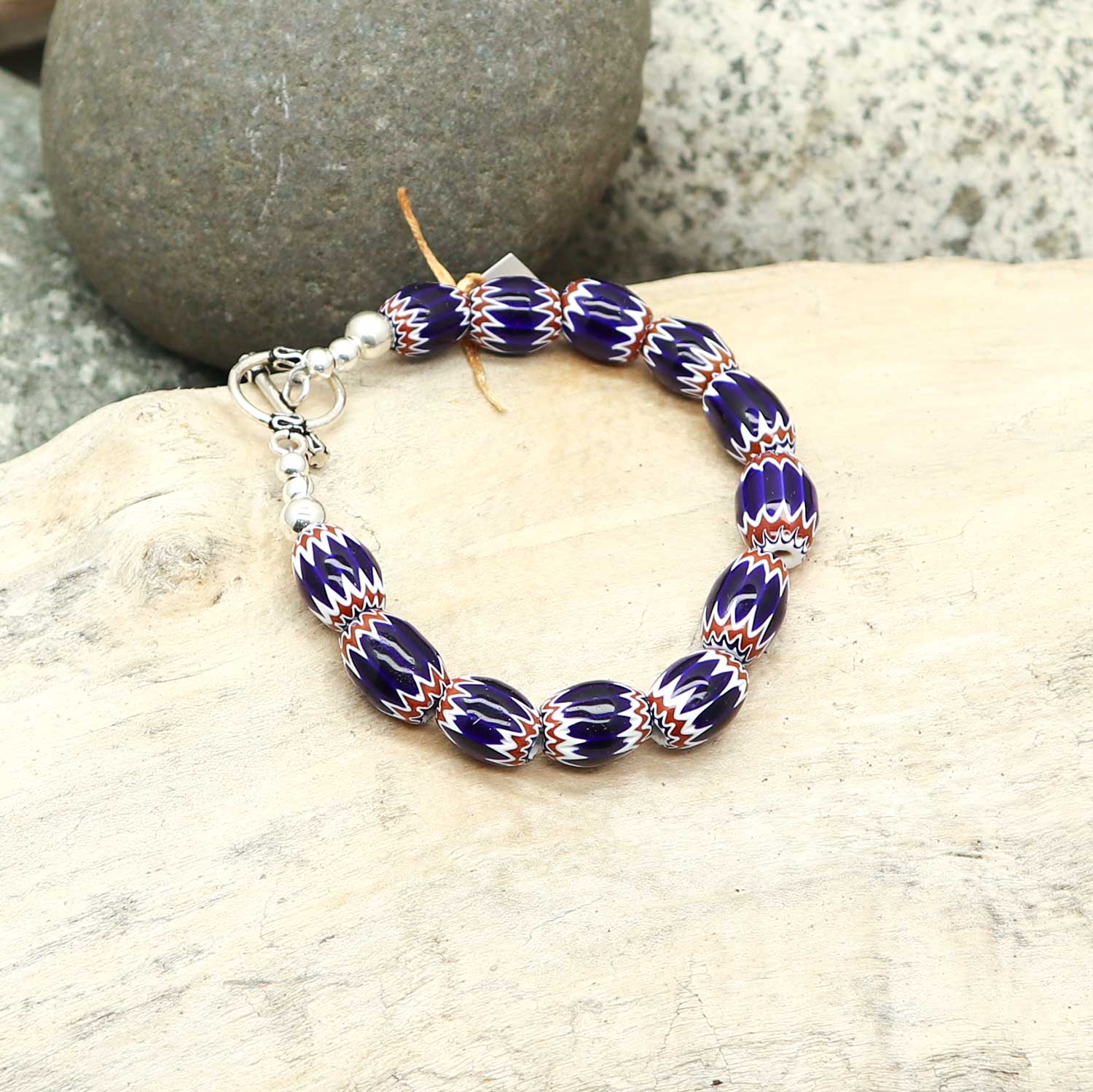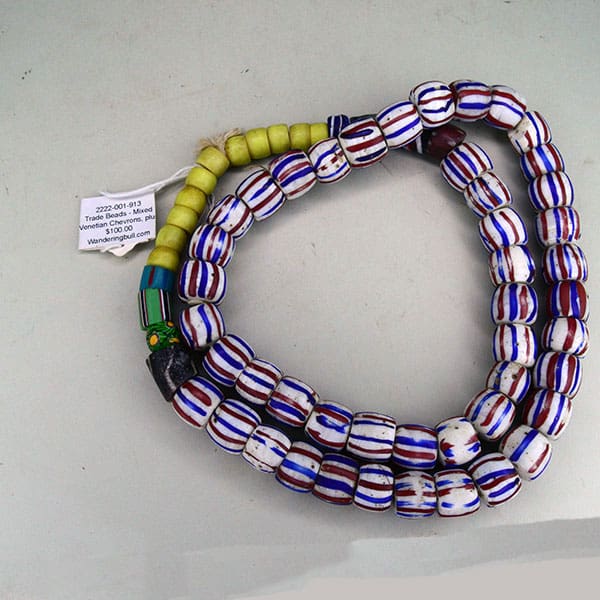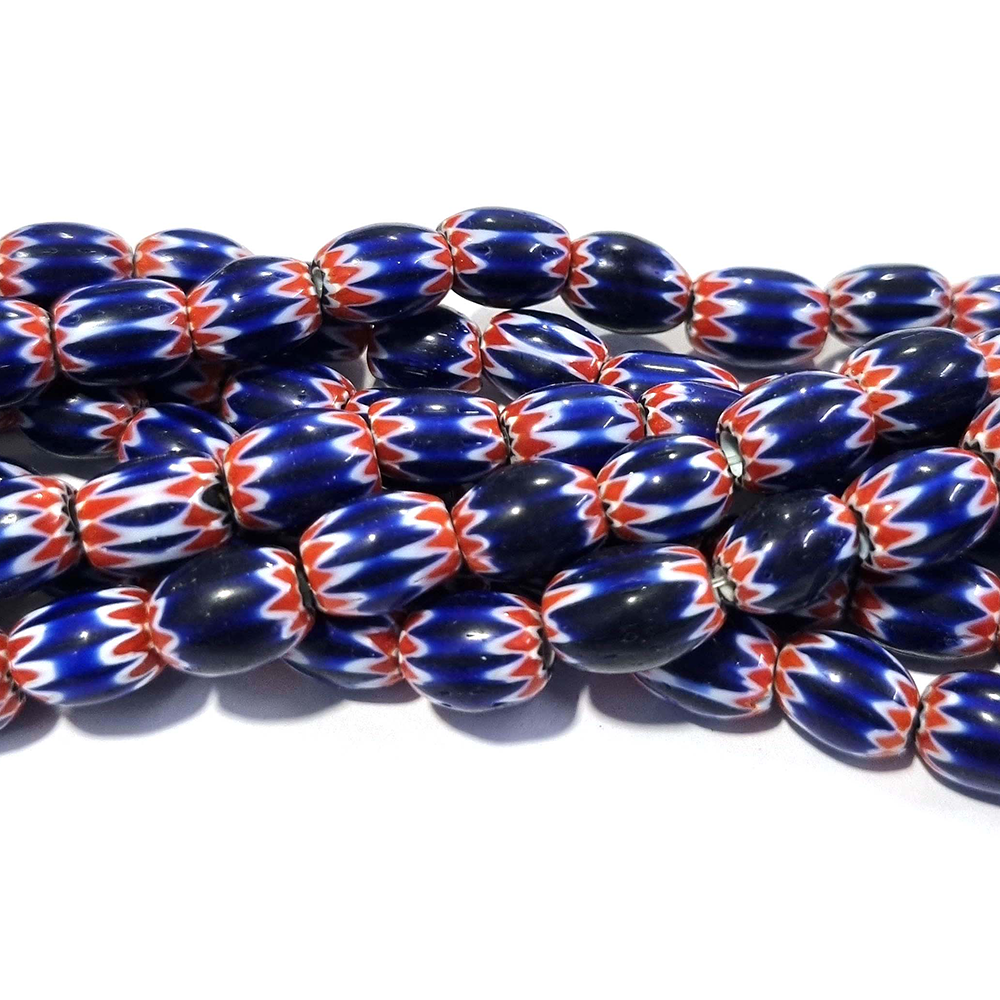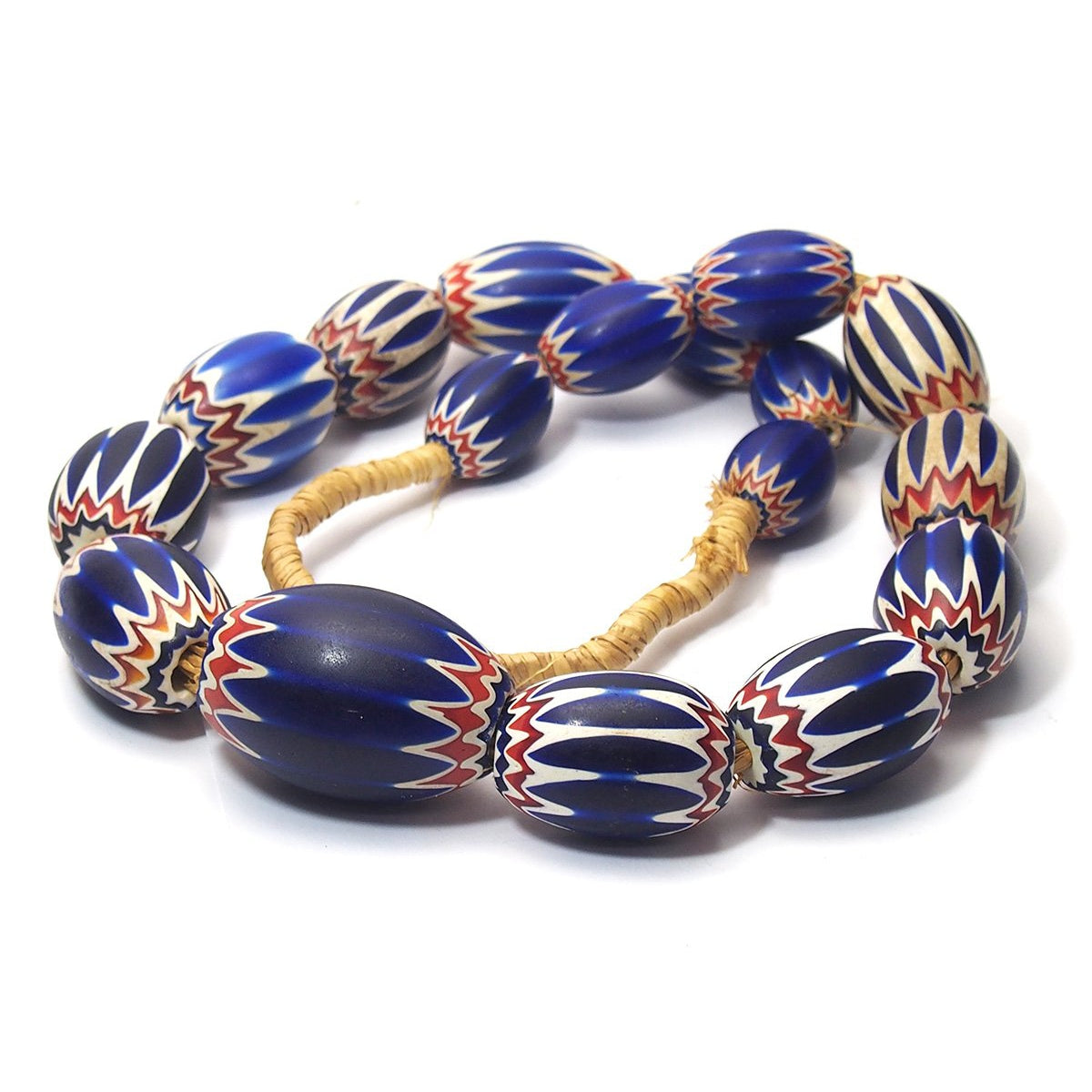Introduction to Chevron Beading
Historical Significance
Chevron beading is a traditional craft that has been practiced for centuries. Known for its distinctive zigzag pattern, chevron beading has found its way into various cultures and artistic expressions. Historically, it is especially prominent in Native American beadwork and African artifacts, serving not only as decoration but also as a means of storytelling and symbolism. Unlike many other patterns, the chevron design stands out due to its geometrical precision and visual appeal. Understanding the historical context of chevron beading provides valuable insight into its lasting impact.
The practice of chevron beading goes back to a time when beads were made from natural materials like shells, stones, and bones. Early artisans meticulously arranged these beads into geometric designs, creating chevron patterns that were both beautiful and culturally significant. For example, in some Native American cultures, the chevron pattern represented rivers or pathways, imbued with spiritual meaning. These patterns adorned clothing, accessories, and ceremonial items, encapsulating the identity and beliefs of the wearers.
In African art, chevron beading holds a different but equally significant place. Beadwork, including the chevron pattern, often conveyed social status, wealth, and religious beliefs. The vibrant colors and intricate designs served as a communication medium, transcending the mere aesthetic. By tracing the roots of chevron beads in diverse cultures, one can appreciate the intricate craftsmanship and symbolic richness that this art form embodies.
Recognizing the historical significance of chevron beading helps us understand its timeless appeal. The legacy of this craft continues to inspire modern artisans, bridging the gap between past and present. By incorporating chevron designs into contemporary beadwork, artists pay homage to a rich tradition while adding their own creative flair.
Modern Appeal
Chevron beading has transcended its historical roots to become a beloved element in today’s craft and fashion scenes. Its timeless design, coupled with endless color possibilities, makes it a versatile choice for various projects. Whether used in jewelry, home decor, or clothing, the chevron pattern adds a touch of elegance and sophistication. The modern appeal of chevron beading lies in its ability to adapt and evolve, reflecting current trends while retaining its classic charm.
In the fashion world, chevron patterns have re-emerged as a chic and trendy design element. Designers incorporate this pattern into bracelets, necklaces, and earrings, creating pieces that range from casual to high-end. The versatility of chevron beadwork allows for a wide array of styles and color combinations, making it suitable for different occasions and personal preferences. Fashion enthusiasts appreciate the pattern’s ability to make a bold statement while remaining elegant and tasteful.
Home decor is another area where chevron beading shines. Cushions, lampshades, wall art, and even table runners benefit from the striking visual impact of the chevron pattern. The zigzag design introduces an element of movement and energy into the space, making it dynamic and engaging. When used in home decor, chevron beading balances modern aesthetics with timeless appeal, creating spaces that are both stylish and inviting.
Artisans and DIY enthusiasts also find chevron beading to be an endlessly inspiring medium. The design’s adaptability allows for creative experimentation, pushing the boundaries of traditional beadwork. Whether working with glass beads, seed beads, or even recycled materials, artisans can create unique pieces that showcase their skills and creativity. Workshops and online tutorials dedicated to chevron beading have surged in popularity, further attesting to its modern-day relevance.
Understanding the modern appeal of chevron beading highlights its versatility and timelessness. This pattern continues to captivate and inspire, proving that classic designs have an enduring place in contemporary art and fashion.
Materials and Tools for Chevron Beading
Essential Materials
To embark on a chevron beading project, gathering the necessary materials is crucial for success. Here’s a list of essential items required for creating chevron patterns:
- Beads: The foundation of any beading project. You can choose from various types such as seed beads, glass beads, or even semi-precious stones. Ensure that you select beads that are uniform in size for consistency in your pattern.
- Beading Thread: A strong, durable thread is essential for stringing your beads. Nylon beading thread or FireLine is often recommended due to their strength and flexibility.
- Needles: Beading needles are longer and thinner than regular sewing needles, allowing them to pass through the small bead holes multiple times. Investing in a good quality needle ensures smooth beading.
- Beading Mat: This provides a non-slip surface for your beads, preventing them from rolling away and making it easier to pick them up. Beading mats are typically made from velvet, foam, or fabric.
- Clasp (if making jewelry): For bracelets or necklaces, a clasp is essential for fastening your piece. Lobster clasps, magnetic clasps, and toggle clasps are popular choices.
- Scissors or Thread Snips: Sharp scissors are essential for cutting your beading thread cleanly without fraying.
- Bead Organizer: Keeping your beads in an organizer with compartments helps you stay organized and makes the beading process more efficient.
Gathering these essential materials ensures that you are well-prepared for your chevron beading project. Proper materials lay the foundation for successful and enjoyable crafting.
Recommended Tools
Having the right tools is fundamental to the chevron beading process. Here’s a list of recommended tools that will facilitate your project:
- Bead Loom (Optional): A bead loom can help maintain tension and alignment, especially for larger projects. It’s a useful tool for creating uniform and intricate patterns.
- Thread Conditioner: Using a thread conditioner like beeswax or Thread Heaven helps reduce tangling and fraying, making the beading process smoother.
- Pliers: Round-nose pliers and chain-nose pliers come in handy for opening and closing jump rings and attaching clasps. They provide precision and make handling small findings easier.
- Ruler or Measuring Tape: Accurate measurements are vital for creating consistent and well-proportioned designs. A ruler or measuring tape ensures you maintain precision in your patterns.
- Bead Scoop: A bead scoop simplifies picking up and transferring beads, especially when working with small seed beads. It saves time and minimizes spillage.
- Work Lamp: Good lighting is crucial for detailed work. A work lamp with a magnifier can help reduce eye strain and improve accuracy in beading.
By equipping yourself with these recommended tools, you ensure a more efficient and enjoyable beading experience. Proper tools enhance the quality of your craftsmanship and make the process smoother.
Steps to Create Chevron Beading
Designing Your Pattern
Designing your chevron pattern is the first and most crucial step in your beading project. Begin by deciding on the size and purpose of your finished piece, whether it’s a bracelet, necklace, or decorative item. Planning your design helps streamline the beading process and ensures a cohesive final product.
- Sketch Your Design: Use graph paper or specialized beading software to sketch your chevron pattern. This step allows you to visualize the design and make necessary adjustments before you start beading.
- Choose Colors: Select color combinations that align with your design vision. Contrast and harmony are essential for making your chevron pattern stand out. Consider using a color wheel to find complementary colors that enhance your design.
- Calculate Bead Count: Determining the number of beads needed for each row ensures you have enough materials. Accurate calculations prevent interruptions during the beading process and help with symmetry in your design.
- Plan Stitches: Decide on the type of stitch you’ll use, such as peyote stitch, herringbone stitch, or brick stitch. Each stitch technique has its own advantages and creates different textures and effects.
Understanding how to design your chevron pattern ensures you have a clear roadmap for your project. This planning phase sets the foundation for a smooth and enjoyable beading experience.
Stringing Your Beads
With your design ready, the next step is to string your beads according to the chevron pattern. This phase requires patience and precision to achieve the desired zigzag effect.
- Prepare Your Thread: Cut a piece of beading thread that’s manageable, typically about 18-24 inches long. Thread your needle and tie a small knot at the end to secure the first bead.
- Start Beading: Begin stringing your beads according to the pattern you sketched. Insert the needle through each bead, following the designed sequence. Maintain even tension to ensure that the beads sit snugly against one another.
- Create the Chevron Effect: To form the chevron pattern, you’ll need to vary the bead count in each row. Starting with a smaller number of beads and gradually increasing or decreasing creates the signature zigzag pattern. Be mindful of your pattern sketch and count the beads accurately.
- Secure Your Rows: After completing each row, secure your work by passing the needle through the last few beads multiple times. This step helps maintain the structure and alignment of your beads.
- Continue Stringing: Continue adding rows, following your pattern until the desired length is achieved. Ensure each row aligns correctly to keep the chevron pattern consistent.
By stringing your beads carefully and following your design, you create a precise and beautiful chevron pattern. This step is where your planning comes to life, resulting in a visually striking piece.
Finishing Touches
Completing your chevron beading project involves adding final touches that enhance both functionality and aesthetics. These finishing steps ensure your piece is polished and ready for use.
- Add Clasp or Findings: If you’re making jewelry, attach the clasp or findings to complete your piece. Use pliers to open jump rings and attach them securely to the ends of your beaded section. Ensure the clasp is easy to open and close but stays secure when worn.
- Reinforce the Ends: Reinforce the ends of your beadwork by weaving the thread through the last few beads and tying off securely. Consider adding a drop of clear jewelry adhesive to the knot for extra security.

- Trim Excess Thread: Use sharp scissors to trim any excess thread close to the knots. Be careful not to cut too close, which might compromise the security of the knot.
- Inspect for Consistency: Lay your piece flat and inspect it for any inconsistencies in the pattern. Make any necessary adjustments to ensure the chevron pattern is uniform throughout.
- Polish and Finish: Finally, use a soft cloth to gently polish your piece, removing any dust or oils from your hands. This step gives your beadwork a finished, professional look.
By adding these finishing touches, you complete your chevron beading project to a high standard. Your carefully crafted piece is now ready to be worn, displayed, or gifted, showcasing your skills and creativity.
Conclusion: The Art and Craft of Chevron Beading
Chevron beading is a timeless craft that bridges history and modern design. From its rich cultural heritage to its contemporary appeal, this pattern continues to captivate and inspire artisans. By gathering the necessary materials, designing a thoughtful pattern, stringing your beads with precision, and adding the final touches, you create a piece that is both beautiful and meaningful.
Understanding the historical significance and modern relevance of chevron beading provides valuable context for appreciating this art form. Whether you are a seasoned beader or a beginner, the chevron pattern offers endless possibilities for creative expression. The materials and tools you choose, combined with meticulous craftsmanship, result in stunning and unique creations.
By embarking on a chevron beading project, you not only continue a long-standing tradition but also contribute to the evolution of this timeless craft. The beauty and complexity of chevron patterns ensure that each piece you create is a testament to the art of beading, reflecting your dedication and artistic vision.
